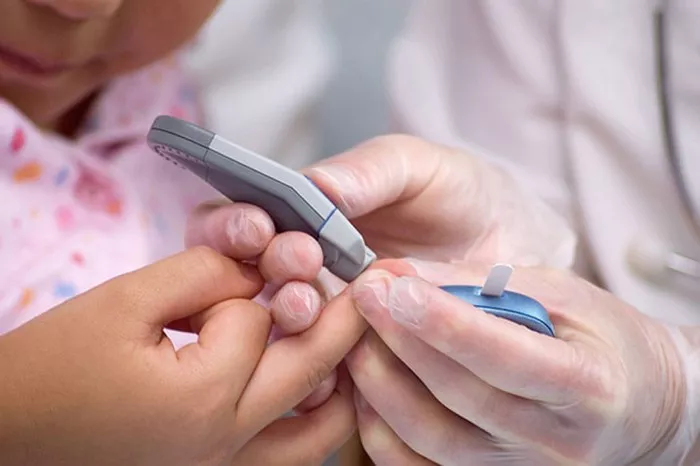Prediabetes is a significant health concern that can lead to Type 2 diabetes if not addressed. It is characterized by elevated blood sugar levels that are higher than normal but not high enough to be classified as diabetes. Monitoring blood glucose levels is crucial in identifying prediabetes, and one of the most important tests for this purpose is the hemoglobin A1C test. This article will explore what the A1C range is for prediabetes, its implications, and the importance of early detection and lifestyle changes.
Understanding the A1C Test
The A1C test, also known as the glycated hemoglobin test, measures the average blood sugar levels over the past two to three months. It is a vital tool for diagnosing diabetes and monitoring glucose control in individuals with diabetes. The A1C test reflects how much glucose has attached to hemoglobin, the protein in red blood cells that carries oxygen.
How the A1C Test Works
When glucose enters the bloodstream, it binds to hemoglobin molecules. The higher the average blood sugar levels, the more glucose attaches to hemoglobin. Since red blood cells typically have a lifespan of about 120 days, the A1C test provides an average of blood glucose levels over this period.
A1C Test Results
The A1C test results are reported as a percentage. For example, an A1C of 5.7% indicates that 5.7% of the hemoglobin in the blood has glucose attached to it. Here are the standard categories for A1C results:
Normal: Below 5.7%
Prediabetes: 5.7% to 6.4%
Diabetes: 6.5% or higher
What is Prediabetes?
Prediabetes is a condition where blood sugar levels are higher than normal but not high enough to be diagnosed as diabetes. It is a critical stage in the progression towards Type 2 diabetes, and individuals with prediabetes are at increased risk of developing cardiovascular diseases.
Risk Factors for Prediabetes
Several factors can increase the likelihood of developing prediabetes:
Age: Being over 45 years increases the risk.
Weight: Excess body weight, especially around the abdomen, is a significant risk factor.
Family History: A family history of diabetes can increase susceptibility.
Sedentary Lifestyle: Lack of physical activity can contribute to insulin resistance.
Ethnicity: Certain ethnic groups, such as African Americans, Hispanic Americans, Native Americans, and some Asian Americans, are at higher risk.
Symptoms of Prediabetes
Often, prediabetes does not present any clear symptoms. However, some individuals may experience the following:
- Increased thirst
- Frequent urination
- Fatigue
- Blurred vision
It is important to note that many people may have prediabetes without experiencing any symptoms, making regular screenings essential.
The A1C Range for Prediabetes
As mentioned, the A1C range that indicates prediabetes is between 5.7% and 6.4%. Understanding this range is crucial for early detection and intervention.
Why A1C is Important in Identifying Prediabetes
Predictive Indicator: A1C levels can predict future risk of developing Type 2 diabetes. Studies show that individuals with an A1C level in the prediabetes range are likely to develop diabetes within 5 to 10 years if no lifestyle changes are made.
Comprehensive Monitoring: The A1C test provides a broader picture of blood sugar control compared to daily glucose monitoring, which can fluctuate significantly.
Baseline for Intervention: An A1C in the prediabetes range provides a starting point for healthcare providers to recommend lifestyle modifications and monitor progress.
Interpreting A1C Results
When individuals receive their A1C results, it is essential to understand the implications:
5.7% to 6.4% (Prediabetes): This range indicates that blood sugar levels are elevated and lifestyle changes should be made to reduce the risk of progressing to Type 2 diabetes.
6.5% or higher (Diabetes): This level indicates that diabetes is present and requires medical management.
Below 5.7% (Normal): Indicates that blood sugar levels are within a healthy range.
Impact of Prediabetes on Health
Prediabetes is not just a precursor to Type 2 diabetes; it can also have other health implications. Individuals with prediabetes are at a higher risk for:
1. Cardiovascular Disease
Elevated blood sugar levels can lead to damage to blood vessels and nerves, increasing the risk of heart disease and stroke. Managing blood sugar levels can significantly reduce these risks.
2. Metabolic Syndrome
Prediabetes is often associated with metabolic syndrome, a cluster of conditions that includes high blood pressure, high blood sugar, excess body fat around the waist, and abnormal cholesterol levels.
3. Type 2 Diabetes
Without intervention, prediabetes can progress to Type 2 diabetes. Studies show that 15% to 30% of people with prediabetes will develop Type 2 diabetes within five years.
Testing for Prediabetes
When to Get Tested
The American Diabetes Association recommends the following guidelines for A1C testing:
Adults aged 45 or older: Testing should occur every three years.
Younger adults with risk factors: If you are younger than 45 but have risk factors for diabetes, you should be tested.
Types of Tests for Diagnosing Prediabetes
A1C Test: Measures average blood sugar levels over the past 2-3 months.
Fasting Plasma Glucose Test: Measures blood sugar after an overnight fast. A result between 100 mg/dL and 125 mg/dL indicates prediabetes.
Oral Glucose Tolerance Test (OGTT): Measures blood sugar before and two hours after drinking a glucose solution. A reading between 140 mg/dL and 199 mg/dL indicates prediabetes.
Lifestyle Changes to Manage Prediabetes
If diagnosed with prediabetes, making lifestyle changes can significantly impact your health and potentially reverse the condition. Here are some effective strategies:
1. Weight Management
Losing even a small percentage of body weight (5-10%) can reduce the risk of developing Type 2 diabetes. Focus on gradual weight loss through healthy eating and physical activity.
2. Healthy Eating
Balanced Diet: Include a variety of fruits, vegetables, whole grains, lean proteins, and healthy fats.
Control Portion Sizes: Be mindful of portion sizes to manage calorie intake.
Limit Sugar and Refined Carbs: Reduce the intake of sugary beverages, snacks, and processed foods.
Increase Fiber Intake: Foods high in fiber can help regulate blood sugar levels.
3. Regular Physical Activity
Engaging in regular physical activity can improve insulin sensitivity and help manage blood sugar levels. Aim for at least 150 minutes of moderate-intensity exercise per week, such as:
- Walking
- Cycling
- Swimming
- Strength training
4. Monitor Blood Sugar Levels
Regularly monitoring blood sugar levels can help track progress and identify patterns. This can be done through home glucose monitoring or regular A1C testing with a healthcare provider.
5. Manage Stress
Chronic stress can affect blood sugar levels. Incorporate stress-reducing activities such as:
- Mindfulness and meditation
- Yoga
- Deep-breathing exercises
6. Avoid Smoking and Limit Alcohol
Both smoking and excessive alcohol consumption can increase the risk of developing Type 2 diabetes and should be avoided or limited.
Regular Monitoring and Follow-Up
For individuals diagnosed with prediabetes, regular follow-up with a healthcare provider is essential. This may include:
Regular A1C Testing: To monitor blood sugar control.
Individualized Action Plans: Working with a registered dietitian or diabetes educator to develop personalized lifestyle change strategies.
Support Groups: Joining a support group can provide motivation and accountability in making healthy changes.
Conclusion
Understanding the A1C range for prediabetes is crucial for early detection and intervention. An A1C level between 5.7% and 6.4% indicates a higher risk of developing Type 2 diabetes, but with lifestyle changes, this risk can be significantly reduced. Monitoring blood sugar levels, making dietary modifications, increasing physical activity, and managing stress are all effective strategies to reverse prediabetes.
If you or someone you know is at risk for prediabetes, it is essential to seek regular screening and take proactive steps to maintain optimal health. Early intervention can make a significant difference in preventing the progression to Type 2 diabetes and reducing the risk of associated health complications.
Related topics:
What Is the Normal Amount of Glucose in Blood?



























